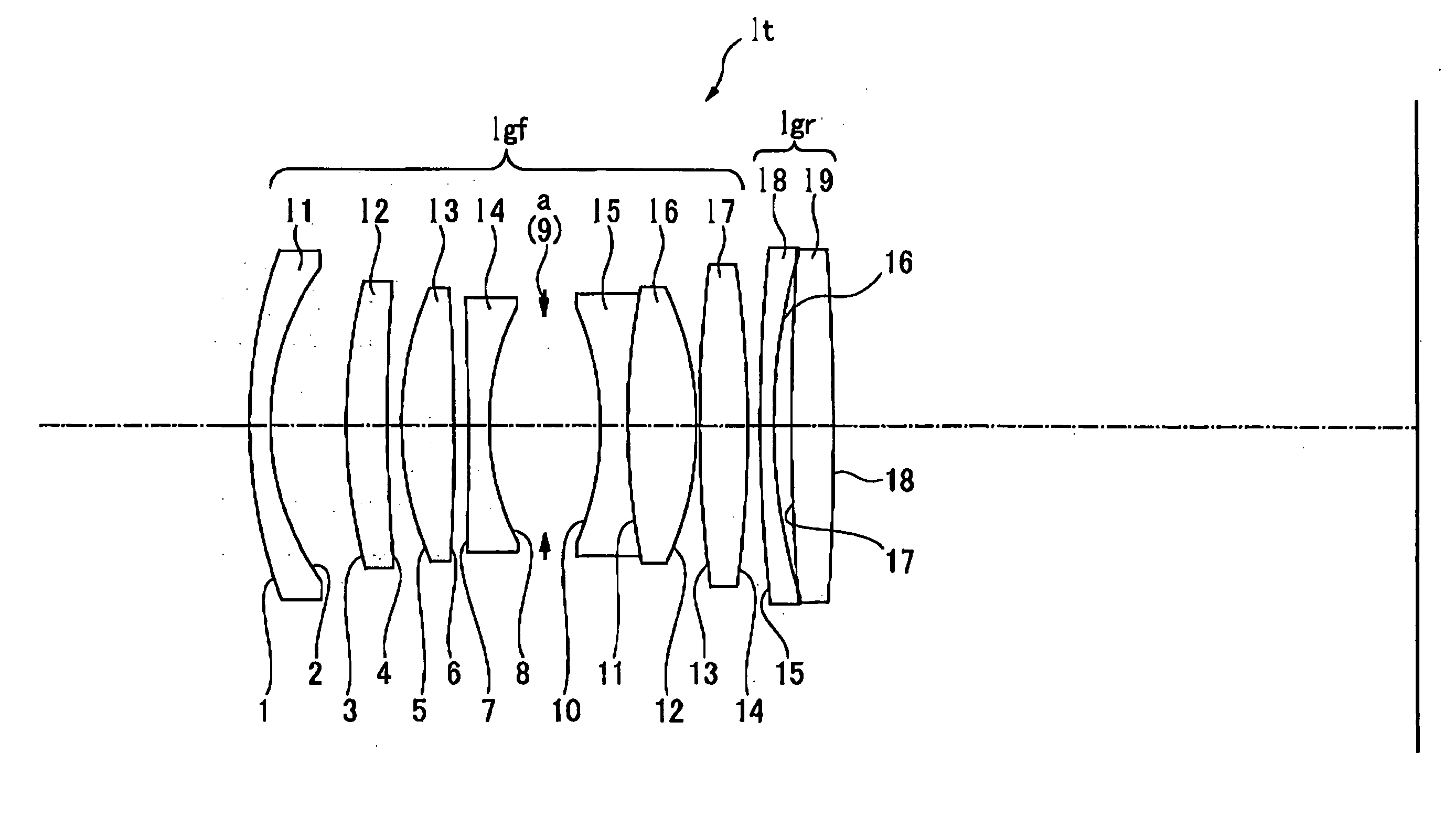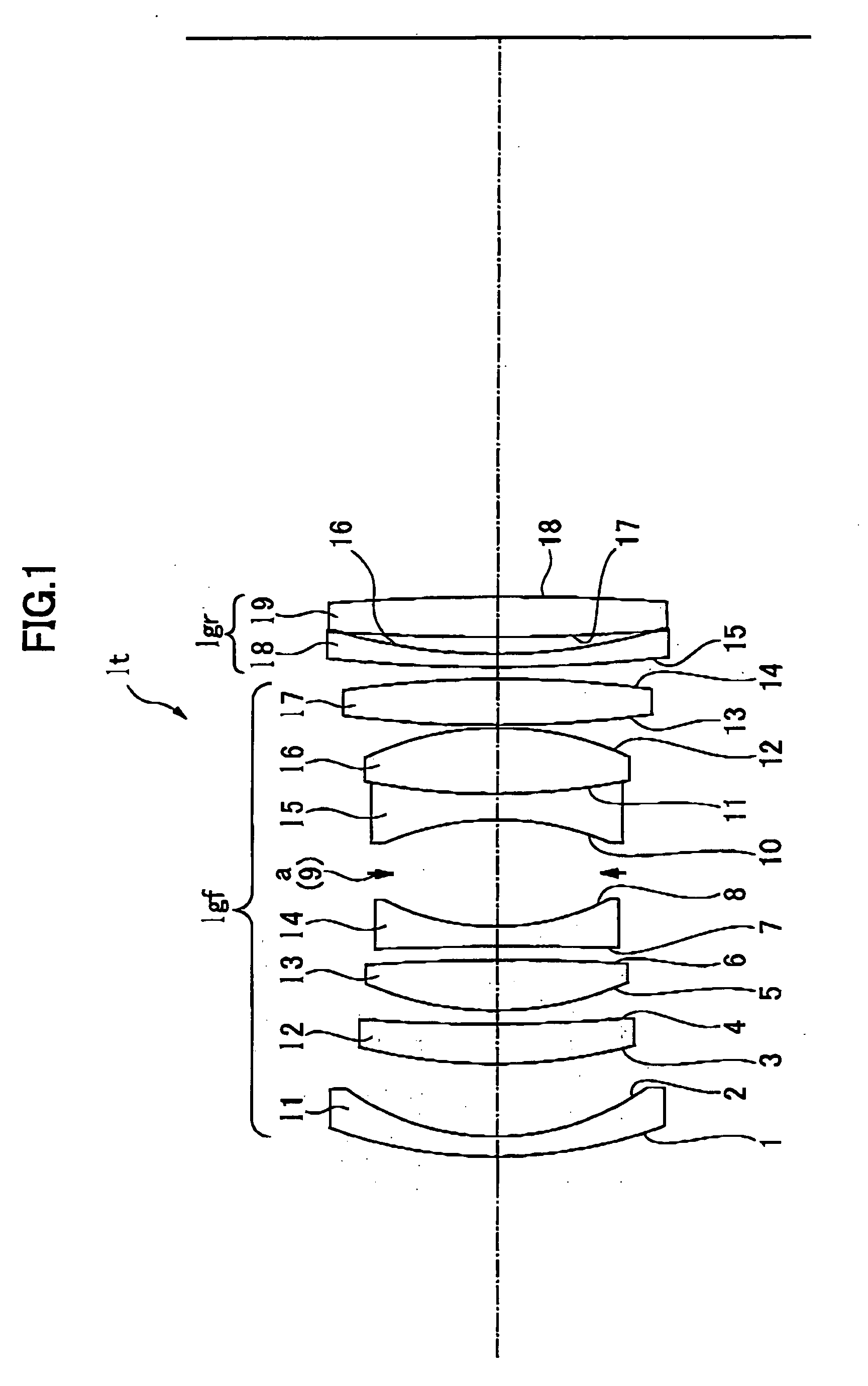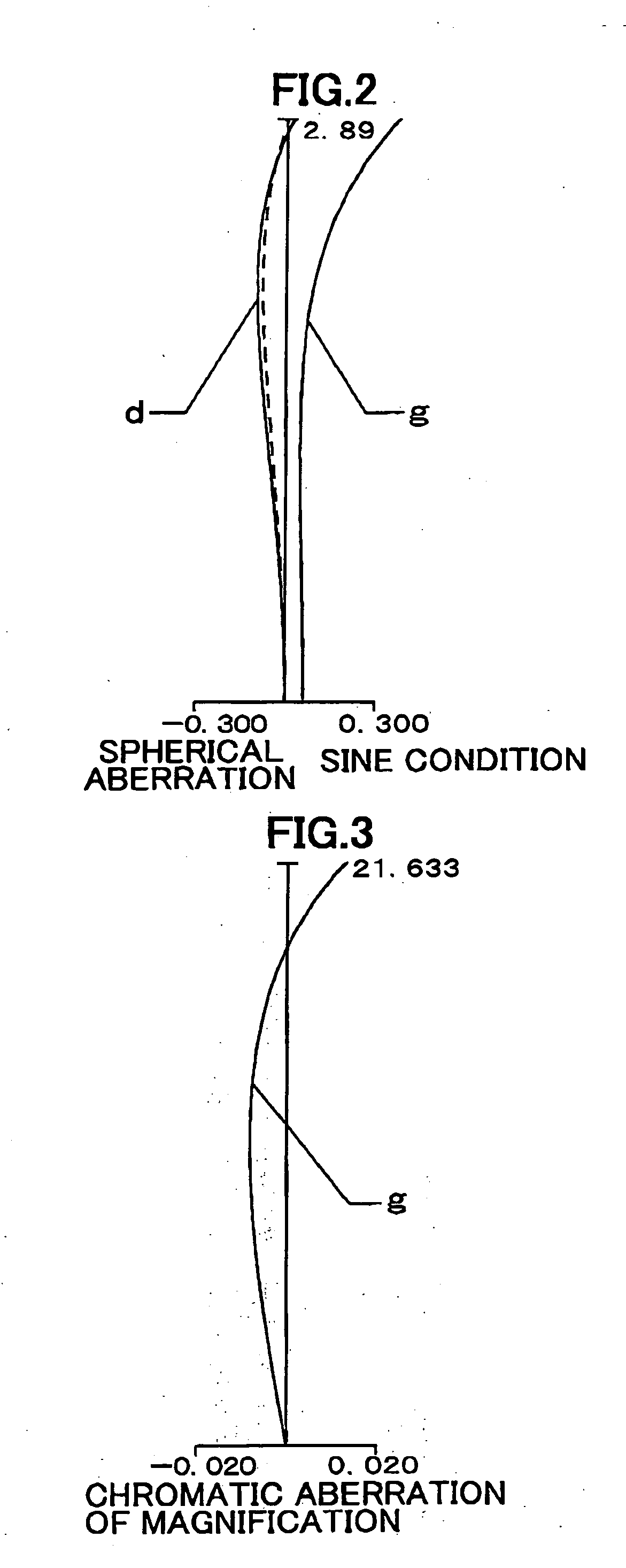Macro lens
a micro lens and lens body technology, applied in the field of micro lenses, can solve the problems of reducing the total length of the lens system, limiting the use of micro lenses, and increasing the displacement of lenses accordingly
- Summary
- Abstract
- Description
- Claims
- Application Information
AI Technical Summary
Problems solved by technology
Method used
Image
Examples
Embodiment Construction
[0037] An embodiment of a macro lens according to the present invention will now be described. The macro lens, as can be seen in FIG. 1, consists of a front lens group of a retrofocus type 1gf of focal length denoted by Ff and a rear lens group 1gr of focal length denoted by Fr of which component lenses are aligned in the order from the closest to the subject.
[0038] The front lens group includes a first lens 11 of a negative meniscus lens of focal length F1 having its convex surface projecting toward the object, a second lens 12 of a positive lens having its one surface with greater curvature oriented toward the object, a third lens 13, a fourth lens 14 of a negative lens having its concave surface with greater curvature oriented toward the imaging plane, and fifth and sixth lenses 15 and 16 of a junction lens in combination of a negative lens with a positive lens. The negative lens of the fifth lens 15 has its one surface with greater curvature oriented toward the object, across a...
PUM
 Login to View More
Login to View More Abstract
Description
Claims
Application Information
 Login to View More
Login to View More - R&D
- Intellectual Property
- Life Sciences
- Materials
- Tech Scout
- Unparalleled Data Quality
- Higher Quality Content
- 60% Fewer Hallucinations
Browse by: Latest US Patents, China's latest patents, Technical Efficacy Thesaurus, Application Domain, Technology Topic, Popular Technical Reports.
© 2025 PatSnap. All rights reserved.Legal|Privacy policy|Modern Slavery Act Transparency Statement|Sitemap|About US| Contact US: help@patsnap.com



